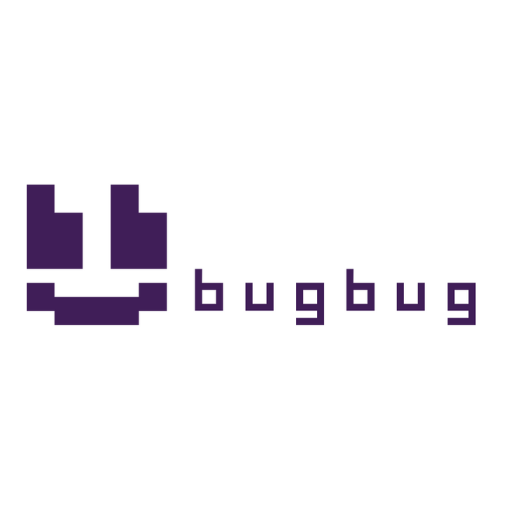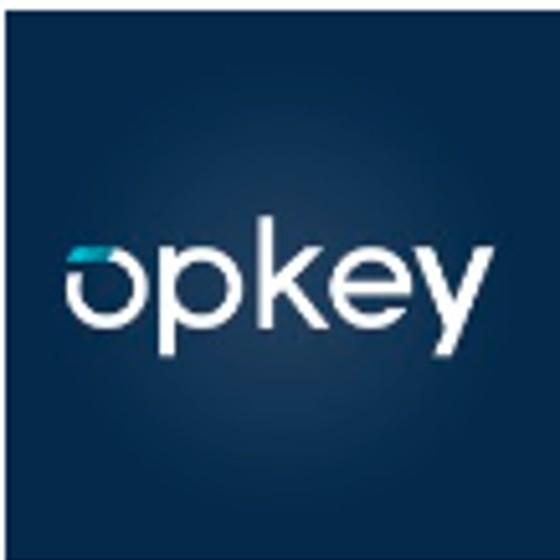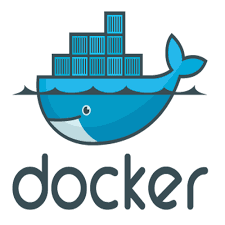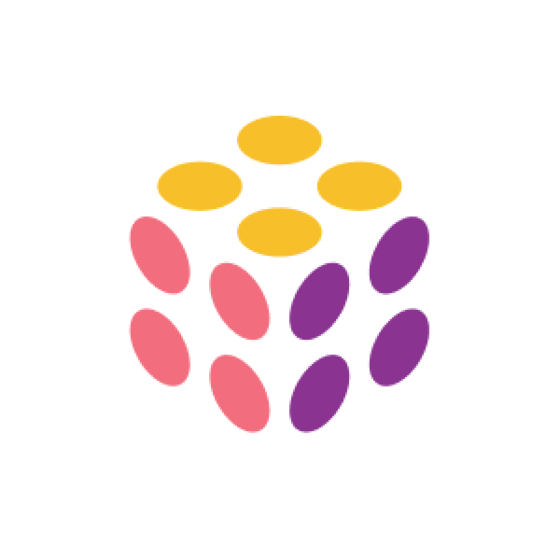Best Test Automation Software Shortlist
Here's my pick of the 10 best software from the 25 tools reviewed.
Our one-on-one guidance will help you find the perfect fit.
Testing software manually can feel like running on a never-ending treadmill. It’s time-consuming, repetitive, and prone to human error—especially when you’re juggling cross-platform compatibility or trying to catch every bug before a critical release. Maybe you’ve experienced delayed launches, frustrated teams, or worse, customer complaints because a minor bug slipped through the cracks. If any of this sounds familiar, you’re not alone. These challenges are exactly why finding the right test automation software is so important.
Test automation tools take the heavy lifting out of testing, allowing you to automate repetitive tasks, run tests across platforms like Android, Windows, and Linux, and deliver faster, more accurate results. They’re designed to save time, reduce errors, and give your team the bandwidth to focus on what truly matters—building exceptional software. Over the years, I’ve worked with countless tools, helping teams streamline workflows and achieve higher-quality outcomes. In this guide, I’ll share my top recommendations based on real-world experience, so you can find the tool that fits your needs and transforms your testing process.
Why Trust Our Software Reviews?
We’ve been testing and reviewing software since 2023. As IT and data specialists ourselves, we know how critical and difficult it is to make the right decision when selecting software.
We invest in deep research to help our audience make better software purchasing decisions. We’ve tested more than 2,000 tools for different IT use cases and written over 1,000 comprehensive software reviews. Learn how we stay transparent & our review methodology.
Best Test Automation Software Summary
| Tool | Best For | Trial Info | Price | ||
|---|---|---|---|---|---|
| 1 | Best for parallel and local test automation | Free plan available + free demo | From $99/month (billed annually) | Website | |
| 2 | Best for test orchestration with real-time analytics | Free trial available | From $50/user/month (billed annually) | Website | |
| 3 | Best for AI-driven test automation | 14-day free trial | From $212/month | Website | |
| 4 | Best for AI-assisted testing automation | 3-month free trial | Pricing upon request | Website | |
| 5 | Best for crowd-sourced testing solutions | Not available | From $3,000/month | Website | |
| 6 | Best for robotic Salesforce testing | Free trial + demo available | Pricing upon request | Website | |
| 7 | Best for GUI testing across platforms | 14-day free trial | From $3,419/user/year | Website | |
| 8 | Best for behavior-driven development collaboration | Free demo available | Pricing upon request | Website | |
| 9 | Best for integrating development and operations processes | Not available | From $6/user/month | Website | |
| 10 | Best for no-code visual test automation | Free trial available + free demo | Pricing upon request | Website |
-

Docker
Visit WebsiteThis is an aggregated rating for this tool including ratings from Crozdesk users and ratings from other sites.4.6 -

Pulumi
Visit WebsiteThis is an aggregated rating for this tool including ratings from Crozdesk users and ratings from other sites.4.8 -

GitHub Actions
Visit Website
Best Test Automation Software Reviews
Below are my detailed summaries of the best test automation software that made it onto my shortlist. My reviews offer a detailed look at the key features, pros & cons, integrations, and ideal use cases of each tool to help you find the best one for you.
BugBug is a no-code test automation tool built for SaaS teams that want to simplify end-to-end testing without writing scripts. You can record tests directly in your browser and run them locally or in the cloud—no setup, no tricky dependencies, and no unexpected usage limits. It’s ideal for fast-moving teams that need reliable test coverage but can’t afford the complexity of traditional testing frameworks.
Why I Picked BugBug:
What stood out most to me is BugBug’s combination of unlimited local test runs—even on the free plan—and fixed-price parallel cloud runs. This lets you test more often without worrying about hitting usage caps, which is especially useful for teams that ship frequently and need fast, continuous feedback across browsers or environments.
BugBug is quick to get started with, whether you’re a PM, a solo QA, or a dev juggling multiple roles. You can record your first test in minutes, tweak it using a simple visual editor, and add custom JavaScript if needed.
BugBug Standout Features & Integrations:
BugBug automatically handles flaky timing issues and generates stable selectors, reducing false positives from UI changes. You can re-record individual steps without repeating the whole test, schedule runs, or trigger them via API or CLI. Results can be sent to Slack, email, or webhooks, and you can export reports as PDFs. It integrates with tools like GitHub, Jira, Jenkins, and others to fit smoothly into your CI/CD workflow.
Pros and cons
Pros:
- Quick test setup
- Browser-based interface
- Parallel test execution
Cons:
- Performance issues reported
- Requires browser access
Opkey streamlines the process of test orchestration, ensuring that every test execution is methodical and coherent. The tool's strength in delivering real-time analytics is pivotal, aiding teams in making data-driven decisions promptly, and reflecting its reputation as a leader in test orchestration with real-time analytics.
Why I Picked Opkey:
In sifting through numerous test orchestration tools, Opkey's capability for providing real-time analytics was undeniable. My process of selection leaned heavily towards tools that empower users with immediate insights, and Opkey surpassed its counterparts in this arena.
This analytical prowess reinforced my belief that Opkey is the premier choice for teams craving real-time data from their test orchestration.
Standout Features and Integrations:
Opkey's signature feature is its real-time analytics dashboard, offering a granular view of test executions. Additionally, the tool supports collaborative test creation and AI-powered test generation. Integrations-wise, Opkey merges with JIRA, Jenkins, and Selenium, ensuring a comprehensive testing ecosystem.
Pros and cons
Pros:
- AI-driven test generation
- Collaborative test creation tools
- Exceptional real-time analytics
Cons:
- Custom integrations might need additional setup
- Occasionally demanding in-system requirements
- The steeper learning curve for beginners
Reflect is a no-code test automation tool that uses generative AI to help you create, run, and maintain automated tests for web applications. It lets you write test steps in plain English and turns them into functional tests without using flaky selectors or writing any code. This makes it easier to keep up with fast-moving development cycles and reduce manual testing work.
Why I Picked Reflect: I picked Reflect because it lets you go from idea to automation in minutes. You can build full regression test suites using just text prompts—no scripting, no setup, no guesswork. It also has a Chrome extension that turns manual test steps into automated tests on the fly, which is useful if you're migrating from spreadsheets or traditional test case tools. Plus, Reflect handles test maintenance automatically when your app changes, so you're not constantly rewriting tests. It’s especially great for teams that want high test coverage without deep QA resources.
Reflect Standout Features and Integrations:
Reflect supports AI-driven element targeting to eliminate fragile CSS and XPath selectors, helping your tests stay stable as your app evolves. You can test email and SMS flows like 2FA, run data-driven tests with parameterized inputs, and catch visual regressions with built-in screenshot diffs. Each failure includes HD video replays and full logs for fast debugging. Integrations include AWS, Shopify, Cloudflare, Google Analytics, Facebook Pixel, Microsoft Ads, Marketo, Zendesk, Drift, and LinkedIn Insight.
Pros and cons
Pros:
- No-code test creation
- AI-powered test maintenance
- Comprehensive CI/CD integration
Cons:
- Limitations to mobile app testing
- Could offer more customization options for test configurations
Autify introduces a new dimension to testing with its AI-driven automation approach. By harnessing artificial intelligence, Autify enhances traditional testing methodologies, aligning itself as a leader in AI-assisted testing automation.
Why I Picked Autify:
In the realm of AI-driven testing tools, Autify surfaced as a standout during my exploration. The tool's ability to weave AI into its testing processes, coupled with its novel approach to automation, made my decision clear. It's this AI-centric design that solidifies my view of Autify as the optimal choice for AI-assisted testing automation.
Standout Features & Integrations:
Autify's AI-driven test generation minimizes manual scripting, and its self-healing tests adapt to changes in the application under test. The platform also boasts cross-browser testing, ensuring comprehensive coverage. On the integrations front, Autify collaborates effectively with tools like JIRA, Slack, and CircleCI.
Pros and cons
Pros:
- Extensive cross-browser testing
- Adaptable self-healing tests
- Dynamic AI-driven test creation
Cons:
- Pricing might not suit smaller teams or projects
- Relies heavily on AI, which could be a double-edged sword
- Might be overkill for simple applications
Test IO harnesses the power of the crowd, providing a platform where diverse testers can assess software under various conditions. This crowd-sourced approach ensures a vast array of testing scenarios, underscoring its position as the top choice for crowd-sourced testing solutions.
Why I Picked Test IO:
When it came to choosing a platform that incorporated the benefits of crowd-sourced testing, Test IO unmistakably stood out. Having assessed several platforms, the breadth and depth of testing provided by Test IO's vast community made it distinct. My comparisons led me to value Test IO as the best tool for teams seeking diverse and holistic testing feedback.
Standout Features and Integrations:
Test IO boasts a vast community of professional testers, ensuring software is vetted under diverse conditions. Their platform is designed for both usability and functional testing, catering to a wide spectrum of testing needs. While Test IO is self-contained, its feedback integrates smoothly with tools like JIRA and Slack for efficient defect management.
Pros and cons
Pros:
- Efficient feedback loop with development teams
- Comprehensive usability and functional testing
- A large and diverse community of testers
Cons:
- Turnaround times can vary based on project scope
- Limited control over individual testers
- Pricing might be steep for smaller projects
Copado is crafted specifically for Salesforce environments, offering robotic testing that ensures Salesforce deployments are robust and error-free. The tool's focus on automating Salesforce testing scenarios, with precision and efficiency, cements its reputation as the primary choice for robotic Salesforce testing.
Why I Picked Copado:
The Salesforce ecosystem, with its unique architecture and functionalities, demands specialized testing solutions. In selecting a tool tailored for this environment, Copado's robotic testing capabilities impressed me the most. Having compared several solutions, I determined that Copado's adeptness at Salesforce-centric robotic testing makes it unparalleled for businesses deeply invested in the Salesforce platform.
Standout Features and Integrations:
Copado excels with its robotic test automation for Salesforce, ensuring thorough coverage of all Salesforce components. Features like version control, continuous integration, and release management elevate its utility.
Notably, Copado's deep integration with the Salesforce platform ensures smooth deployment and feedback cycles.
Pros and cons
Pros:
- Integration with Salesforce deployments
- Comprehensive version control and CI/CD features
- Tailored for Salesforce environments
Cons:
- Advanced features may come with a steeper learning curve
- Requires Salesforce-specific knowledge for optimal use
- May not be suitable for non-Salesforce testing
TestComplete is designed to simplify GUI testing, making it accessible for both desktop and mobile applications across multiple platforms. Its versatility in handling a wide range of graphical user interfaces is the cornerstone of why it stands out as the top choice for cross-platform GUI testing.
Why I Picked TestComplete:
When determining which tool to select for GUI testing, TestComplete emerged as a front-runner due to its flexibility and robust features. From my comparisons and judgment, its ability to test across different platforms differentiated it from its peers. This capability anchored my opinion that TestComplete is best suited for GUI testing across platforms.
Standout Features and Integrations:
TestComplete offers script-free testing, making it approachable for users of all skill levels. It also boasts object recognition and visual tracking capabilities, ensuring accurate and efficient testing. Integrating with tools like Jenkins, JIRA, and GitHub, TestComplete ensures that your testing fits right into your development pipeline.
Pros and cons
Pros:
- Integrations with popular development tools
- Object recognition capabilities
- Comprehensive platform coverage for GUI testing
Cons:
- Requires occasional updates for optimal performance
- Initial setup can be time-consuming
- The price point might be steep for smaller teams
Cucumber stands as a staple in the behavior-driven development (BDD) domain, facilitating collaboration between technical and non-technical members of software teams. Its emphasis on plain language specifications makes it a beacon for teams looking to align on development objectives, resonating with its tag as the best tool for BDD collaboration.
Why I Picked Cucumber:
In my quest to select the paramount tool for behavior-driven development, Cucumber consistently surfaced as the preferred choice. Its unique approach to fostering collaboration by using easily understandable language sets it apart. Based on these traits, I judged Cucumber to be the best for teams aiming for enhanced BDD collaboration.
Standout Features and Integrations:
At the heart of Cucumber lies its Gherkin language, enabling the creation of tests in plain language. This bridges the gap between developers and stakeholders, ensuring clearer requirements and objectives. For integrations, Cucumber works well with Selenium, Appium, and Spring, amongst others, making it versatile for different testing environments.
Pros and cons
Pros:
- Integrates well with popular testing tools
- Facilitates stronger collaboration between teams
- Emphasis on plain language for clear communication
Cons:
- Larger projects might experience performance lags
- Some users might find the initial setup complex
- The steeper learning curve for newcomers
DevOps, while a broad term, often refers to Microsoft's Azure DevOps Services, which provide collaboration tools to enhance the software development lifecycle. As teams seek tighter cohesion between development and operations, Azure DevOps emerges as a top pick for this integration, driving efficiency and improving release cycles.
Why I Picked DevOps:
While 'DevOps' represents a methodology, when considering tools that embody the DevOps principles, Azure DevOps came to the fore. My choice was anchored in its all-encompassing feature set and Microsoft's reputation. Comparing its offerings with others, I felt Azure DevOps was superior for teams aiming to fuse development and operations.
Standout Features and Integrations:
Azure DevOps shines with features like Boards for planning, Repos for code repositories, and Pipelines for CI/CD. It also offers Artifacts to manage packages and Test Plans to oversee testing. Integrations are vast, with Azure DevOps easily connecting to popular tools like GitHub, Jenkins, and Kubernetes.
Pros and cons
Pros:
- Broad integration capabilities
- Strong security features and compliance certifications
- Comprehensive suite covering the entire DevOps lifecycle
Cons:
- Some advanced features come at additional costs
- Transitioning from other platforms might require time and training
- Might be complex for smaller teams or projects
Leapwork provides a bridge into the realm of test automation for those wary of intricate coding. With its visual approach to automation, it offers a user-friendly interface, validating its position as the go-to solution for no-code visual test automation.
Why I Picked Leapwork:
Choosing the right tool for no-code visual testing was a meticulous process. Leapwork stood out in my evaluations due to its intuitive design, enabling users to create and manage tests without deep coding knowledge. It's this simplicity and visual prowess that solidified my decision that Leapwork is best for those seeking a no-code solution.
Standout Features and Integrations:
Leapwork shines with its flowchart-based design, making test creation as simple as dragging and dropping components. This visual approach is complemented by robust debugging tools and detailed logs. On the integration front, Leapwork syncs with CI/CD tools like Jenkins and Bamboo, as well as defect management tools like JIRA.
Pros and cons
Pros:
- A broad range of integration options
- Detailed logs for efficient debugging
- Intuitive no-code test creation
Cons:
- Occasional lag in complex test scenarios
- Requires training to maximize tool potential
- Pricing may be prohibitive for smaller teams
Other Test Automation Software
Below is a list of additional test automation software that I shortlisted, but did not make it to the top 10. They are definitely worth checking out.
- UiPath: Robotics Process Automation (RPA)
For enterprise robotic process automation
- Postman
For API testing and development collaboration
- QA Wolf
For fast test creation in real browsers
- Tricentis Test Automation
For comprehensive continuous testing
- BrowserStack
Good for cross-browser and device testing in real environments
- Testlio
Good for combining professional testers with automation
- Jenkins
Good for continuous integration and delivery
- Provar
Good for Salesforce testing with reusable test cases
- Selenium
Good for open-source web application testing
- Cypress
Good for real-time reloading and time-travel debugging
- Rainforest QA
Good for combining manual and automated QA
- Katalon
Good for integrated environments and multiple testing types
- Applitools
Good for visual AI-driven test automation
- Testim
Good for AI-based test authoring and maintenance
- Robot Framework
Good for keyword-driven test automation
Related Software Reviews
If you still haven't found what you're looking for here, check out these alternative tools that we've tested and evaluated.
- Network Monitoring Software
- Server Monitoring Software
- SD-Wan Solutions
- Infrastructure Monitoring Tools
- Packet Sniffer
- Application Monitoring Tools
Test Automation Software Selection Criteria
When selecting the best test automation software to include in this list, I considered common buyer needs and pain points like reducing manual testing time and improving test accuracy. I also used the following framework to keep my evaluation structured and fair:
Core Functionality (25% of total score)
To be considered for inclusion in this list, each solution had to fulfill these common use cases:
- Automate functional and regression testing
- Execute tests across multiple browsers and devices
- Generate detailed test reports
- Support continuous integration and deployment (CI/CD)
- Handle data-driven testing
Additional Standout Features (25% of total score)
To help further narrow down the competition, I also looked for unique features, such as:
- AI-based test creation and analysis
- Self-healing tests that adjust to UI changes
- Parallel test execution for faster results
- Low-code or no-code test creation options
- Built-in test scheduling and orchestration
Usability (10% of total score)
To get a sense of the usability of each system, I considered the following:
- Intuitive user interface
- Clear test case organization
- Drag-and-drop test creation
- Low learning curve for new users
- Flexible customization options
Onboarding (10% of total score)
To evaluate the onboarding experience for each platform, I considered the following:
- Step-by-step setup guides
- Interactive product tours
- Availability of training videos and documentation
- Access to a knowledge base
- Dedicated onboarding support team
Customer Support (10% of total score)
To assess each software provider’s customer support services, I considered the following:
- 24/7 support availability
- Live chat, email, and phone support options
- Fast response times
- Access to a dedicated support agent
- Community forums for troubleshooting
Value For Money (10% of total score)
To evaluate the value for money of each platform, I considered the following:
- Transparent pricing model
- Cost per user or per test run
- Availability of a free trial or demo
- Discounts for larger teams or annual billing
- Access to core features in base pricing
Customer Reviews (10% of total score)
To get a sense of overall customer satisfaction, I considered the following when reading customer reviews:
- Satisfaction with test accuracy and performance
- Positive feedback on ease of use
- Comments on customer support responsiveness
- Reports on scalability and performance
- Insights on feature reliability and flexibility
How to Choose Test Automation Software
It’s easy to get bogged down in long feature lists and complex pricing structures. To help you stay focused as you work through your unique software selection process, here’s a checklist of factors to keep in mind:
| Factor | What to Consider |
|---|---|
| Scalability | Ensure the tool can handle increasing test volume and larger test suites without slowing down. Look for cloud-based or distributed execution options. |
| Integrations | Check if the tool integrates with your CI/CD pipeline, version control systems, and other development tools to avoid workflow disruptions. |
| Customizability | Look for options to modify test case management, reporting formats, and workflows to fit your team’s testing needs. Flexible scripting languages are also helpful. |
| Ease of Use | The interface should be intuitive, with drag-and-drop functionality and clear test case organization. A steep learning curve can slow down adoption. |
| Budget | Compare the cost per user or test run. Look for flexible pricing models that adjust based on your team's size and testing frequency. |
| Security Safeguards | Ensure the tool includes encryption, access controls, and secure data storage to protect sensitive test data. |
| Test Coverage | Look for cross-platform support and the ability to test across different browsers, devices, and operating systems. |
| Reporting and Analytics | The tool should provide detailed reports on test results, pass/fail rates, and issue tracking to help your team spot patterns and improve quality. |
Trends in Test Automation Software
In my research, I sourced countless product updates, press releases, and release logs from different test automation software vendors. Here are some of the emerging trends I’m keeping an eye on:
- AI-driven testing: More tools are using artificial intelligence to create and optimize test cases automatically. Build automation software that harnesses AI reduces manual effort and increases accuracy by identifying patterns and predicting potential failures.
- Self-healing tests: Some tools now adjust to changes in the code or user interface automatically. This minimizes the need for manual test maintenance and keeps tests reliable even when the codebase changes.
- Parallel execution: Vendors are improving the ability to run tests concurrently across different browsers and devices. This reduces test execution time and speeds up feedback cycles.
- Low-code and no-code testing: Tools are offering visual, drag-and-drop interfaces that let non-technical team members create and modify tests without needing coding knowledge.
- End-to-end testing: More platforms now support testing across the entire user journey, from front-end UI to back-end API, helping teams catch issues that wouldn’t be visible in isolated tests.
What Is A Test Automation Software?
Test automation software is a tool designed for testing software for testers and developers to automate the process of software validation, mobile testing, and manual testing, ensuring applications, whether web-based or mobile, function as parallel test that is intended across diverse environments. Leveraging programming languages like Java and Python, these tools streamline tasks such as regression testing, unit testing, web testing, and UI tests.
Professionals in agile development settings, particularly those working with platforms like Android, Windows, and web apps, utilize these platforms to enhance test coverage, and test automation framework, optimize test management, and improve overall software quality.
Features of Test Automation Software
When selecting test automation software, keep an eye out for the following key features:
- Cross-browser testing: Ensures your application works correctly on different browsers and operating systems.
- Parallel execution: Runs multiple tests simultaneously to reduce testing time and increase efficiency.
- Data-driven testing: Uses data from external sources to create dynamic test cases and improve test coverage.
- Self-healing tests: Automatically adjusts to changes in the code or user interface to prevent test failures.
- AI-based test automation software: Uses machine learning to create and optimize test cases, improving accuracy and reducing manual effort.
- API testing: Allows you to test the functionality and performance of APIs to ensure back-end stability.
- Performance monitoring: Tracks test execution times and identifies bottlenecks to improve application performance.
- CI/CD integration: Connects with continuous integration and deployment pipelines to automate testing during development cycles.
- Test scheduling: Lets you set up recurring test runs to catch issues early and maintain consistent performance.
- Detailed reporting: Generates reports with pass/fail rates, error logs, and test history to help your team analyze results and improve test quality.
Benefits of Test Automation Software
Implementing test automation software provides several benefits for your team and your business. Here are a few you can look forward to:
- Faster testing cycles: Automating repetitive tests reduces manual effort and speeds up the feedback loop during development.
- Improved test accuracy: Automated tests remove the risk of human error, ensuring consistent and reliable test results.
- Cost savings: Running automated tests reduces labor costs and helps catch issues earlier, avoiding expensive fixes later.
- Better test coverage: Automated tests can cover more scenarios, devices, and browsers than manual testing alone.
- Increased developer productivity: Developers can focus on building new features instead of fixing bugs, thanks to faster and more accurate test feedback.
- Early bug detection: Running tests during the development cycle helps catch and resolve issues before they reach production.
- Detailed insights: Automated reporting provides detailed feedback on test results, helping your team identify trends and improve performance.
Costs and Pricing of Test Automation Software
Selecting test automation software requires an understanding of the various pricing models and plans available. Costs vary based on features, team size, add-ons, and more. The table below summarizes common plans, their average prices, and typical features included in test automation software solutions:
Plan Comparison Table for Test Automation Software
| Plan Type | Average Price | Common Features |
|---|---|---|
| Free Plan | $0 | Basic test execution, limited test cases, and basic reporting. |
| Personal Plan | $10-$50/user/month | Test creation, cross-browser testing, test scheduling, and real-time reporting. |
| Business Plan | $50-$150/user/month | Parallel execution, API testing, detailed reports, and CI/CD integration. |
| Enterprise Plan | $150-$500/user/month | AI-based testing, self-healing tests, custom workflows, and dedicated support. |
Most Common Questions Regarding Test Automation Software (FAQs)
What are the benefits of using test automation software?
Test automation software offers a plethora of advantages to the software development process, including:
- Efficiency: Automation can significantly speed up the testing process by running tests in parallel and eliminating the need for manual repetitions.
- Reusability: Once created, automated test scripts can be reused across different phases of development and for different projects.
- Accuracy: Automated tests reduce the risk of human error and ensure tests are performed consistently every time.
- Increased Coverage: Automation allows more tests to be executed during a test cycle, ensuring more extensive coverage.
- Cost Reduction: Over time, automating repetitive and time-consuming tasks can lead to substantial cost savings.
How much does test automation software typically cost?
Pricing for test automation software can vary widely based on the features offered, the number of users, and the type of software being tested.
What are the typical pricing models for these tools?
Most test automation tools offer several pricing models, including:
- Per User Licensing: Pricing is based on the number of individual users.
- Flat Rate: A single price for unlimited usage.
- Tiered Pricing: Different prices based on the package or suite of features chosen.
- Pay-as-You-Go: Users are charged based on the resources or number of tests they run, often used in cloud-based solutions.
What is the usual price range for these tools?
Test automation tools can range from free, open-source options to enterprise solutions that might cost thousands of dollars annually. A typical range might be from $10/user/month to over $500/user/month for premium solutions.
Which software is considered the cheapest?
While prices can change, tools like Selenium and Appium are open-source and free to use, though they may have costs associated with advanced features or integrations.
Are there any high-end, more expensive tools?
Yes, tools like BrowserStack, Testim, and Eggplant tend to be on the pricier side due to their extensive feature sets and enterprise-oriented offerings.
Are there any completely free test automation tools?
Yes, several tools like Selenium, Appium, and Robot Framework are open-source and free. However, it’s essential to consider potential costs related to setting up, maintaining, and integrating these tools.
What factors should I consider when deciding on my budget for a test automation tool?
It’s crucial to weigh the tool’s features and benefits against its price, considering factors like the size of your team, the complexity of your projects, and the frequency of testing. Also, think about long-term costs, including training, maintenance, and potential upgrades or add-ons.
Conclusion
While I've done my best to provide a comprehensive overview of some of the top test automation software out there, the tech world is ever-evolving. If you've come across a tool that you believe deserves a spot on this list or have personal experiences to share about any of the mentioned products, I'd love to hear from you. Every contribution helps make this guide more holistic and valuable for all readers. Let's collaborate and ensure everyone has the tools they need to succeed.
























